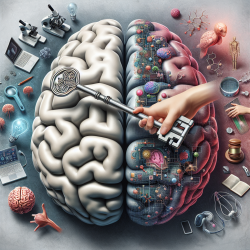Understanding the Impact of White Matter Connectivity on Therapy Practices
As a practitioner in the field of special education and therapy, staying informed about the latest research is crucial to enhancing your skills and providing the best care for your students. A recent study titled "Altered white matter connectivity in children with congenital heart disease with single ventricle physiology" offers valuable insights that can be implemented in therapeutic practices.
Key Findings of the Study
The study focused on children aged 6-11 years with complex cyanotic congenital heart disease (CHD) who have undergone Fontan palliation. The researchers found that these children exhibited widespread decreases in white matter connectivity compared to typically developing controls. This decrease in connectivity was linked to performance in several cognitive domains, highlighting the importance of white matter in cognitive development.
Implications for Therapy
For practitioners, these findings underscore the need to consider neurodevelopmental aspects when designing therapy programs. Here are some ways you can incorporate these insights into your practice:
- Focus on Cognitive Domains: Pay special attention to cognitive areas such as verbal memory, auditory attention, and processing speed, as these are impacted by white matter connectivity.
- Customized Interventions: Develop personalized intervention plans that address the specific cognitive deficits observed in children with CHD.
- Continuous Monitoring: Regularly assess the cognitive development of children with CHD to adjust therapy plans as needed.
Encouraging Further Research
While this study provides significant insights, it also opens the door for further research. As a practitioner, you can contribute to this growing field by:
- Participating in Research Studies: Collaborate with researchers to provide data and insights from your practice.
- Conducting Case Studies: Document and share your experiences and findings with the wider community.
- Advocating for Funding: Support initiatives that fund research into neurodevelopmental aspects of CHD.
Conclusion
By integrating the findings from this study into your therapeutic practices, you can enhance the support you provide to children with CHD. Continuous learning and adaptation are key to effective therapy, and staying informed about the latest research is a vital part of this process.
To read the original research paper, please follow this link: Altered white matter connectivity in children with congenital heart disease with single ventricle physiology.










